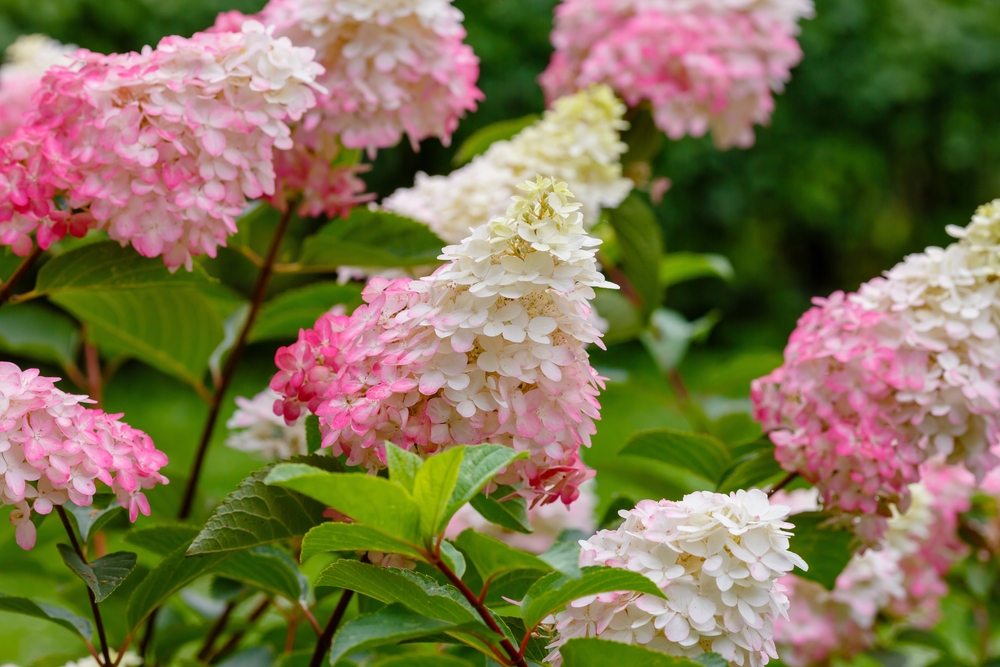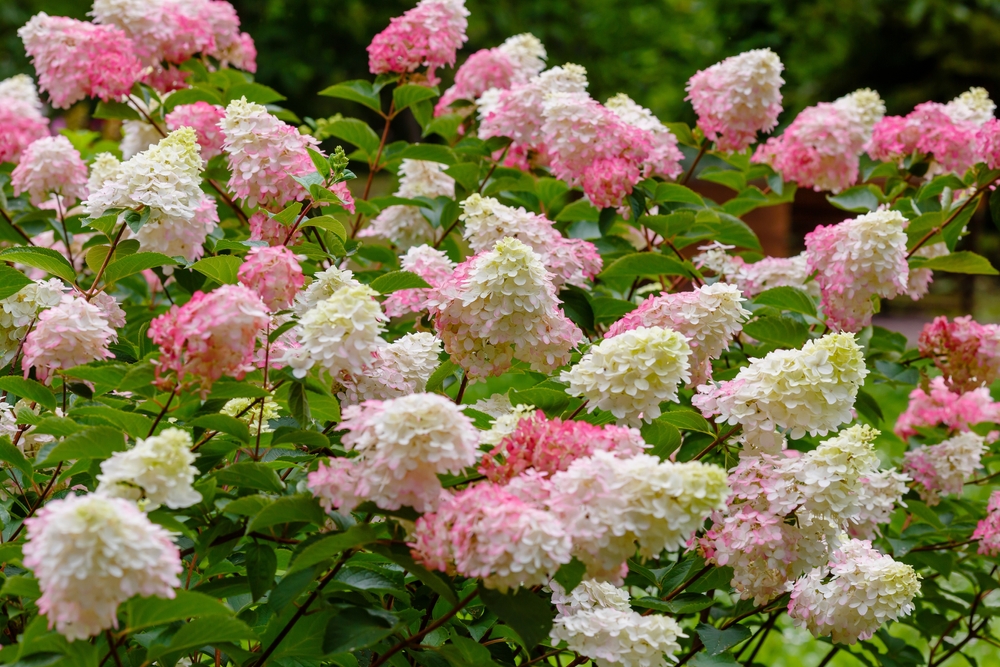Candelabra hydrangea is a gorgeous decorative plant. It produces stunning (and gigantic) candle-like flowers that will increase the looks of your garden throughout the summer and fall.
Its blooms will attract plenty of beneficial pollinators to your garden, which will contribute to the health of your plants. Overall, adding this species of hydrangea can bring you several benefits. But what should you know about growing candelabra hydrangea in your garden? You can find all the information you need in this essential guide!

| Botanical Name | Candelabra hydrangea |
| Common Name | Panicle Hydrangea |
| Plant Type | Perennial |
| Flower Color | The plant produces gorgeous rosy and red candle-shaped blooms. They grow on sturdy stems that prevent the panicles from drooping. |
| Size When Mature | Up to 6 feet tall. Also, it spreads about 5 feet wide at maturity. |
| Bloom Time | Summer and Fall |
| Sun Requirements | Full Sun to Partial Shade |
| USDA Hardiness Zones | 3-8 |
| Soil PH Range | 5.0 and 7.0 |
| Soil Type | Moist, well-draining, slightly acidic, and fertile |
| Water Needs | Medium |
| Native Area | China and Japan |
What you Need to Know About Candelabra Hydrangea
If you are familiar with hydrangeas, you should know about their stunning looks. There are several varieties of this plant. However, this is an excellent option if you need to add an elegant touch to your yard (and prefer large flowers).
Despite what you may think when looking at it, candelabra hydrangea plants do not require special attention from your side. Additionally, because of their tiny leaves, they will better survive warm temperatures and is less likely to wilt (compared to other hydrangea varieties).
Its flowers appear in the summer and might last until the fall. Besides being gorgeous, they are also fragrant and a magnet for bees and butterflies. While it is not as dangerous as other plant species, hydrangeas can be mildly toxic to cats and dogs.
If you have pets running around your garden, ensure your animals will not eat their leaves, flowers, or buds. Indeed, they can cause vomiting, diarrhea, depression, and confusion when ingested in conspicuous quantities.
How to Care for Candelabra Hydrangea
Taking care of candelabra hydrangea is not something out of this world. Still, it requires you to get familiar with its needs and wants. Providing your hydrangea with all it needs to thrive will ensure satisfactory results and prevent the appearance of pests and diseases. So, we put together everything you need to know about growing a thriving Candelabra hydrangea in this essential guide.
Light
To get the best blooms (and vivid colors), you must plant your candelabra hydrangea in a sunny location. Your plant should get at least six hours of direct sun daily. But if you live in a hot region, consider providing afternoon shade to your hydrangea to prevent sunburn and heat stress.
Water and Soil Needs
While this plant isn’t too fussy about soil conditions, it will perform better in well-draining substrates. Remember to adjust your watering schedule according to your local climate conditions. Ideally, don’t allow your hydrangea to dry completely. Instead, keep it moist without overwatering it. Always feel the soil with your fingers before adding extra moisture to your plant. Adding a layer of mulch will help you increase drainage and improve water retention, which will come in handy during the summer.
Don’t worry too much about soil pH. However, try to provide your candelabra hydrangea with slightly acidic conditions. It will give you the best flowers. Remember to space your hydrangeas at least 4 feet apart. Doing so will ensure adequate airflow and minimize the spread of diseases and infections.
Temperature Requirements
Candelabra hydrangeas are versatile plants: they adapt to various climates and will thrive in USDA hardiness zones between 3 and 8. Avoid exposing your plants to temperatures below 40°F: too much cold might stress them.
To protect your hydrangeas during the winter, consider adding a thick layer of mulch around the root area. Doing so will insulate your plant and prevent thermal shocks.
Fertilizer
While fertilizer isn’t always necessary, feeding your plant with a slow-release product during the spring will boost its growth and enhance flower production. Also, adding high-quality compost around your plant will increase the available nutrients and result in a healthy plant.
Common Diseases
Candelabra hydrangea might be susceptible to attacks from aphids and mites. If you notice these bugs on your plant, ensure you take prompt action to eliminate them. Additionally, you might have to take measures against bug blight, leaf spot, mildew, and rust.
Overwatering is a common cause of most issues. So, avoid giving too much moisture to your plant and ensure the soil has adequate drainage.
Candelabra Hydrangea Propagation
You can propagate your candelabra hydrangea from stem cuttings. The procedure is simple and doesn’t require too much effort from your side. Take some healthy stems from your plant and allow them to root in the water or the soil.
After a couple of weeks, your cuttings should have developed roots. When they are ready, it is time to move them to a suitable container and keep an eye on them. For best results, maintain their moisture constant. Also, don’t forget to transfer them to a larger pot (or directly on the ground) as their size increases.

